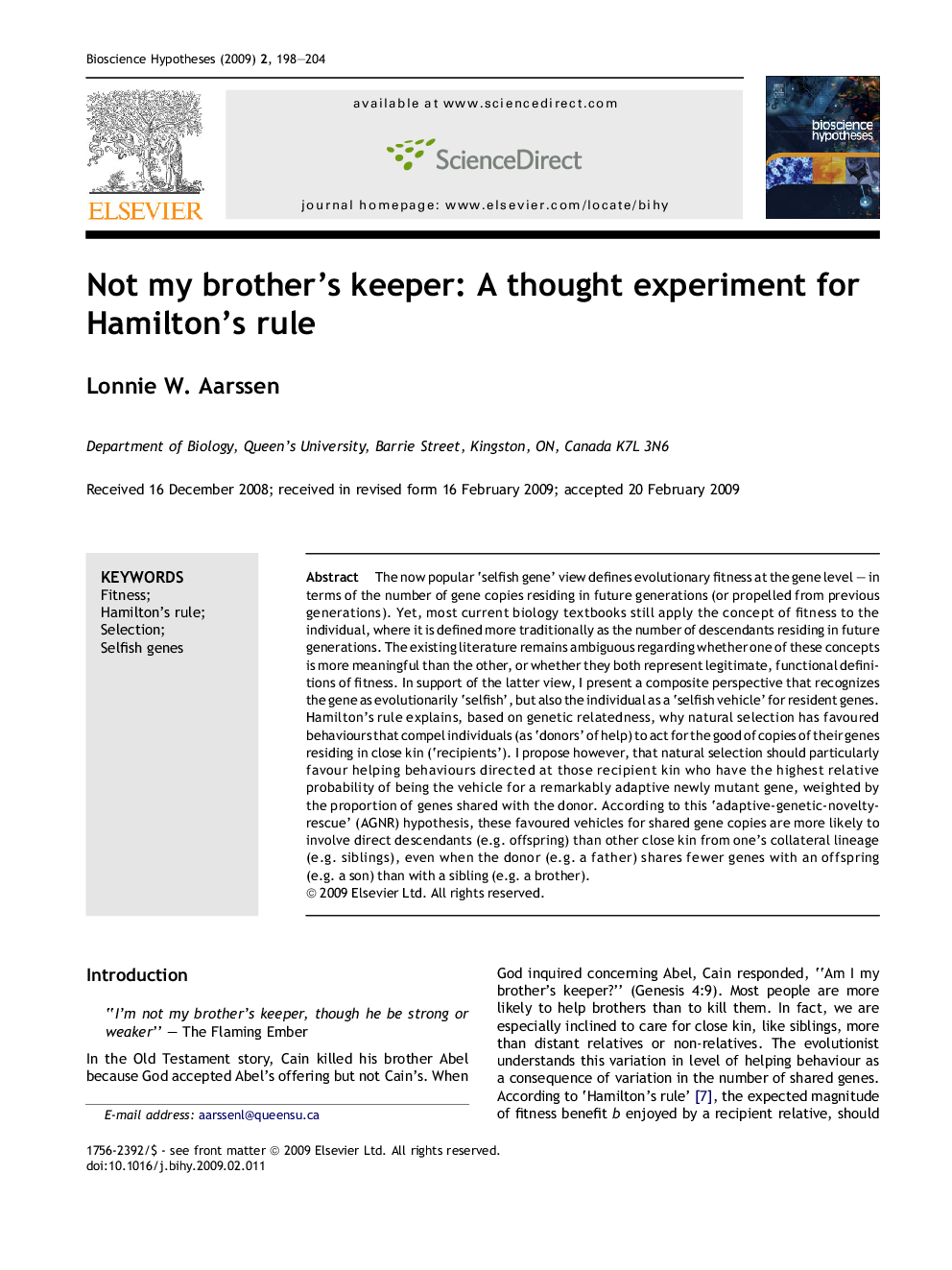| Article ID | Journal | Published Year | Pages | File Type |
|---|---|---|---|---|
| 2034833 | Bioscience Hypotheses | 2009 | 7 Pages |
The now popular ‘selfish gene’ view defines evolutionary fitness at the gene level – in terms of the number of gene copies residing in future generations (or propelled from previous generations). Yet, most current biology textbooks still apply the concept of fitness to the individual, where it is defined more traditionally as the number of descendants residing in future generations. The existing literature remains ambiguous regarding whether one of these concepts is more meaningful than the other, or whether they both represent legitimate, functional definitions of fitness. In support of the latter view, I present a composite perspective that recognizes the gene as evolutionarily ‘selfish’, but also the individual as a ‘selfish vehicle’ for resident genes. Hamilton's rule explains, based on genetic relatedness, why natural selection has favoured behaviours that compel individuals (as ‘donors’ of help) to act for the good of copies of their genes residing in close kin (‘recipients’). I propose however, that natural selection should particularly favour helping behaviours directed at those recipient kin who have the highest relative probability of being the vehicle for a remarkably adaptive newly mutant gene, weighted by the proportion of genes shared with the donor. According to this ‘adaptive-genetic-novelty-rescue’ (AGNR) hypothesis, these favoured vehicles for shared gene copies are more likely to involve direct descendants (e.g. offspring) than other close kin from one's collateral lineage (e.g. siblings), even when the donor (e.g. a father) shares fewer genes with an offspring (e.g. a son) than with a sibling (e.g. a brother).
